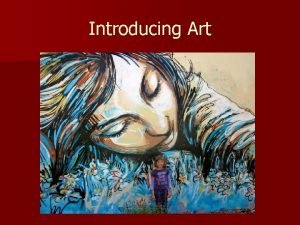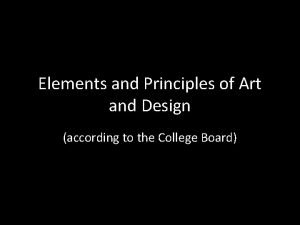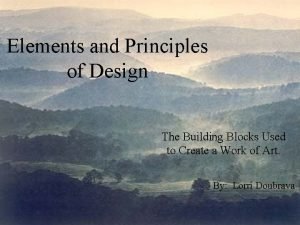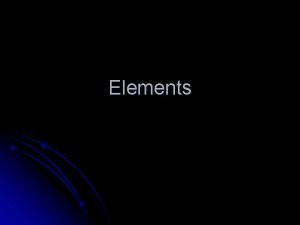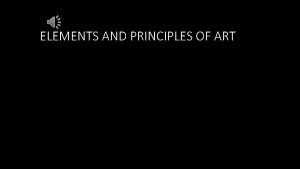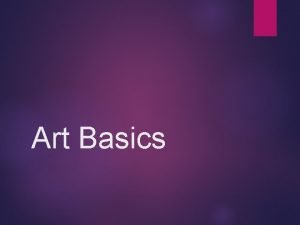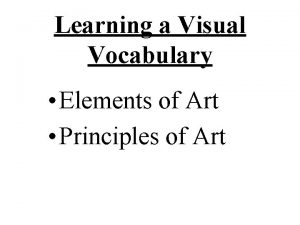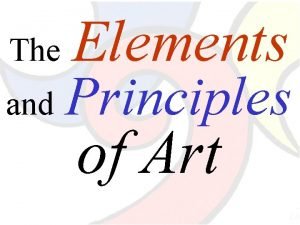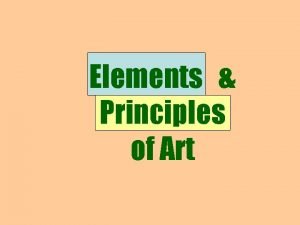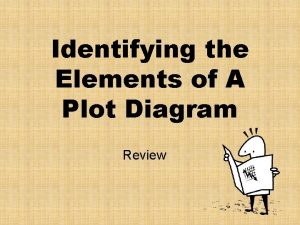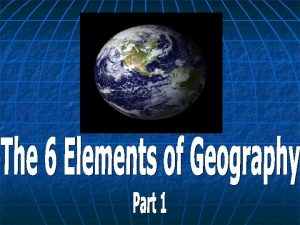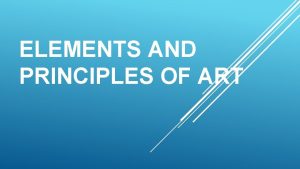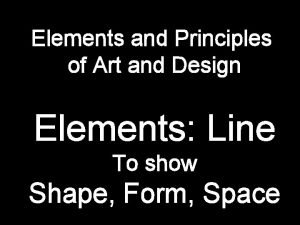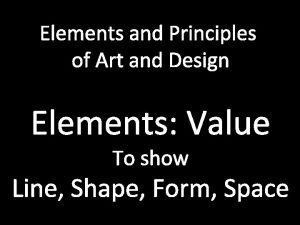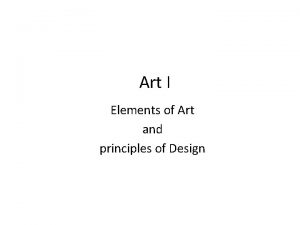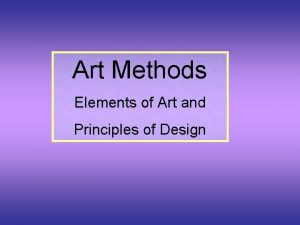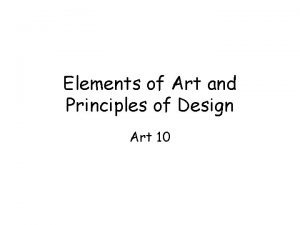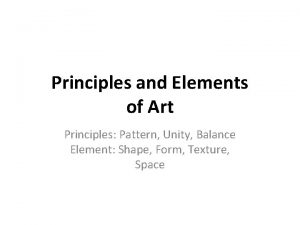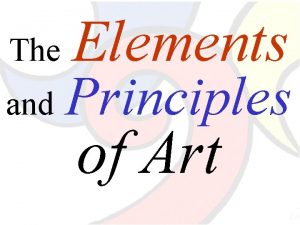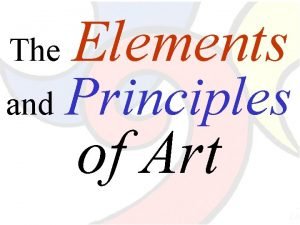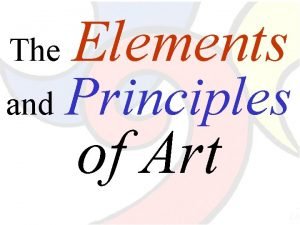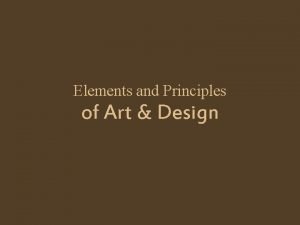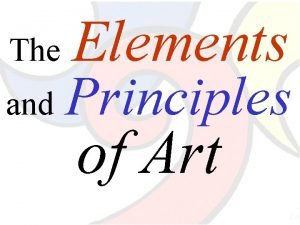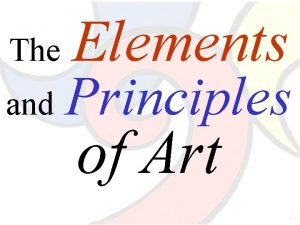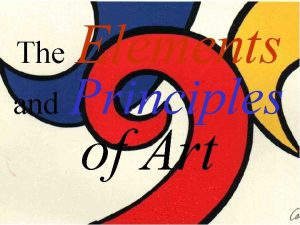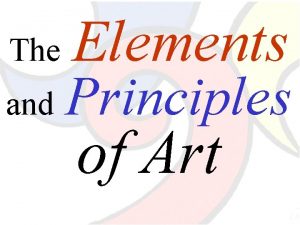Elements and Principles of art Definitions The Elements































- Slides: 31

Elements and Principles of art

Definitions: �The Elements are the tools that create quality artwork �The Principals are how we use the tools to create the quality artwork �Visual Art- Artwork that appeals primarily to the sense of sight and typically exists in permanent form. (painting, drawing, sculpture)

Definitions continued… �Composition- the arrangement of the objects in a work of art �Medium-Materials that are used to create art


Line �Continuous mark made on a surface by a moving point. It can be 2 D or 3 D. It is an outline or silhouette �Example: picture pen on paper, wire sculpture,

Three Types of Line Horizontal Diagonal Vertical

Picasso’s Line Drawing

Use of a single line

Shape �A line with common end point to create a 2 D object.

Form �Three dimensional and encloses a space consists of height, width, and depth �cylinder, cube, sphere, pyramid, cone


Form in an environment

Color �This element has 3 properties 1. HUE-name of the color 2. INTENSITY-strength of the color 3. VALUE- lightness or darkness of color


Matching hues


Value �Lightness or darkness of color. Value is needed to express volume (making drawings look 3 D) Need to have 3 values to appear 3 D Light Medium Dark



Texture �Surface quality or “feel” of object is rendered to make the drawing look like it is touchable.

Space �Distance or area between, around, above or withings. Can be 2 D or 3 D.


Principals Of Design

Emphasis- points of interest to pull the viewer’s eye to important points of the work

Balance-sense of stability in the body of work. Creating a feeling of equal weight

Harmony-using similar elements throughout the work

Variety-differences within the work. Artists use different shapes, textures, colors, and values

Movement-adds excitement by showing action to direct the viewer’s eye

Rhythm-type of movement that repeats shapes and/or colors

Proportion-or scale, refers to the size of the objects

Unity-all parts of the art look like an equal whole.
 Elements and principles of art
Elements and principles of art Elements and principles of art
Elements and principles of art Elements and principles of art
Elements and principles of art It is the path our eyes follow when we look at work of art
It is the path our eyes follow when we look at work of art Rhythm and balance in art
Rhythm and balance in art Elements and principles of design matrix examples
Elements and principles of design matrix examples Basic elements of musical play/theatre
Basic elements of musical play/theatre Visual vocabulary art
Visual vocabulary art Kinds of elements and principles of arts
Kinds of elements and principles of arts Examples of literary techniques
Examples of literary techniques Elements principles of art
Elements principles of art Arts elements and principles
Arts elements and principles Identifying the elements of a plot diagram
Identifying the elements of a plot diagram Elements of a story definition
Elements of a story definition Elements of a story definition
Elements of a story definition Elements of a story definition
Elements of a story definition Six essential elements of geography definitions
Six essential elements of geography definitions Hình ảnh bộ gõ cơ thể búng tay
Hình ảnh bộ gõ cơ thể búng tay Lp html
Lp html Bổ thể
Bổ thể Tỉ lệ cơ thể trẻ em
Tỉ lệ cơ thể trẻ em Chó sói
Chó sói Tư thế worm breton là gì
Tư thế worm breton là gì Chúa yêu trần thế alleluia
Chúa yêu trần thế alleluia Các môn thể thao bắt đầu bằng tiếng bóng
Các môn thể thao bắt đầu bằng tiếng bóng Thế nào là hệ số cao nhất
Thế nào là hệ số cao nhất Các châu lục và đại dương trên thế giới
Các châu lục và đại dương trên thế giới Công thức tiính động năng
Công thức tiính động năng Trời xanh đây là của chúng ta thể thơ
Trời xanh đây là của chúng ta thể thơ Mật thư anh em như thể tay chân
Mật thư anh em như thể tay chân Phép trừ bù
Phép trừ bù độ dài liên kết
độ dài liên kết
